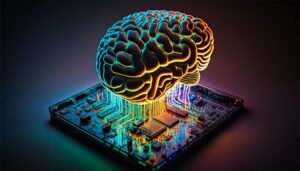The world is facing several real-world problems such as climate change, poverty, healthcare, and education. In the past, these problems seemed too big and complex to solve. However, modern digital systems are now providing innovative solutions that are making a significant impact. These solutions have been designed to solve real-world problems efficiently and effectively.
Digital systems have revolutionized the way we live and work. They have enabled us to connect and communicate in ways that were unimaginable a few decades ago. The internet, social media, and smartphones are just a few examples of digital systems that have transformed our lives. These systems have not only made our lives more convenient but have also enabled us to solve some of the world’s most pressing problems.
One of the most significant problems facing the world today is climate change. Digital systems are playing a crucial role in addressing this issue. For instance, the use of renewable energy sources such as wind and solar power has been made possible through advanced digital systems. These systems have enabled the efficient capture and distribution of energy from renewable sources, making them more accessible and affordable.
Digital systems have also been used to improve healthcare. For instance, telemedicine has become increasingly popular, especially during the COVID-19 pandemic. Telemedicine has enabled patients to receive medical consultations and treatment remotely, without having to visit a hospital or clinic. This has not only made healthcare more accessible but has also helped to reduce the spread of the virus.
Another area where digital systems are making a significant impact is education. The pandemic forced schools and universities to shift to online learning, and this has been made possible through digital systems. Online learning has enabled students to continue their education, even when physical classrooms were closed. Additionally, digital systems such as e-learning platforms, virtual reality, and artificial intelligence have been used to enhance the learning experience and make it more engaging and interactive.
Digital systems are also being used to address poverty. For instance, mobile banking has made it possible for people in remote and underdeveloped areas to access financial services. This has enabled them to save, borrow and transfer money, which was previously not possible. Additionally, digital systems are being used to provide vocational training and job opportunities, which are critical in reducing poverty.
In conclusion, digital systems have transformed the world and are providing innovative solutions to some of the world’s most pressing problems. From climate change to healthcare, education, and poverty, digital systems have made it possible to solve these problems efficiently and effectively. As we continue to innovate and develop new technologies, we can expect to see more groundbreaking solutions that will have a significant impact on the world. However, it is crucial to ensure that these systems are accessible to everyone, and their impact is sustainable in the long run.







Be First to Comment